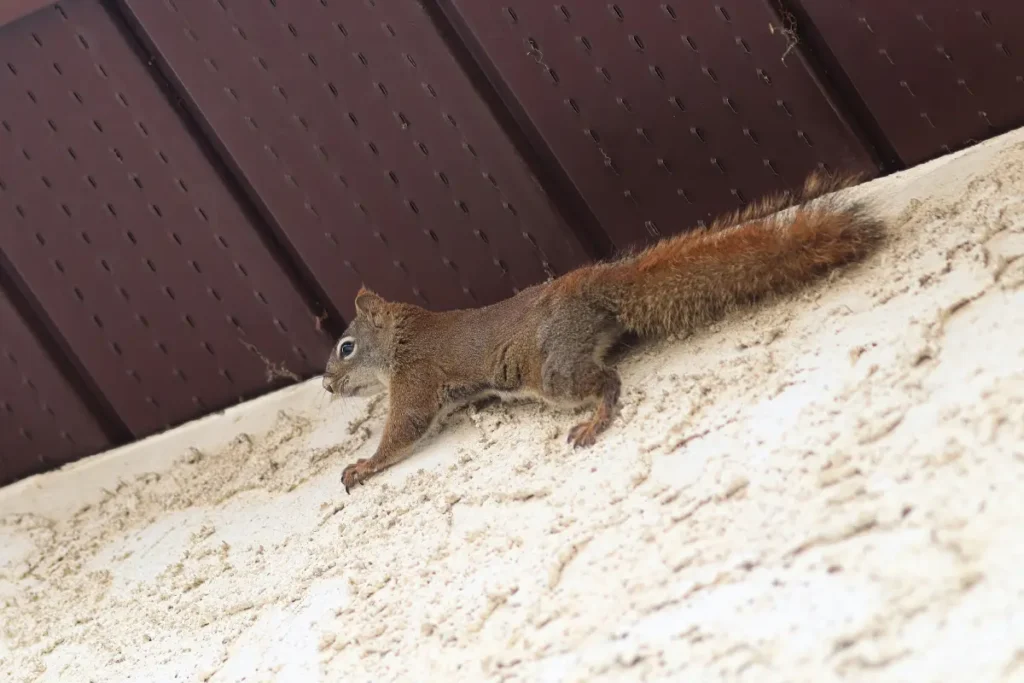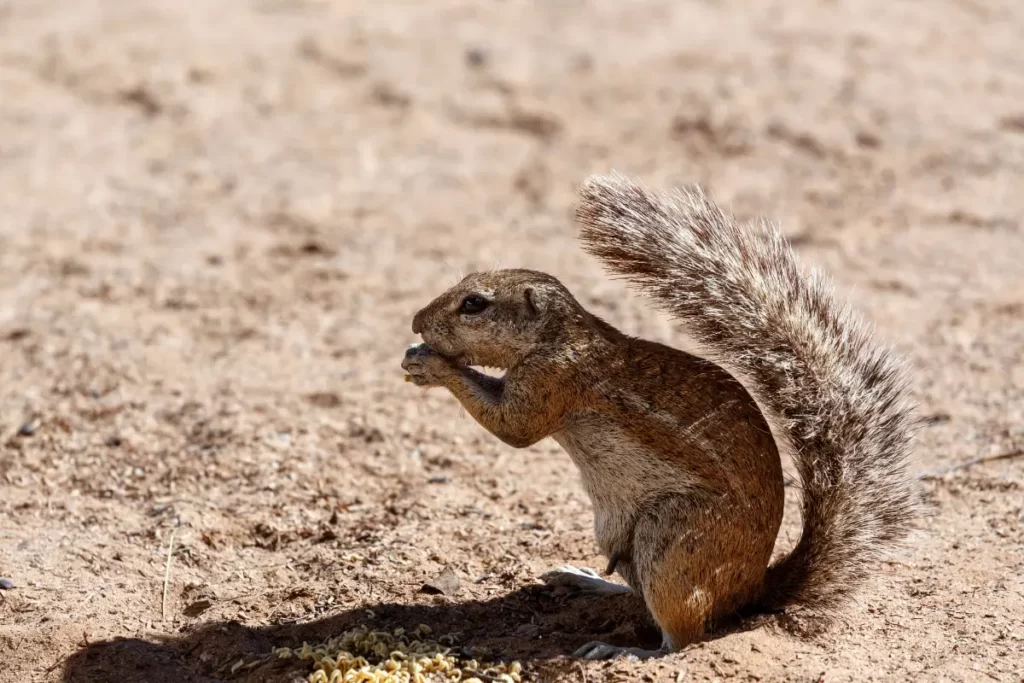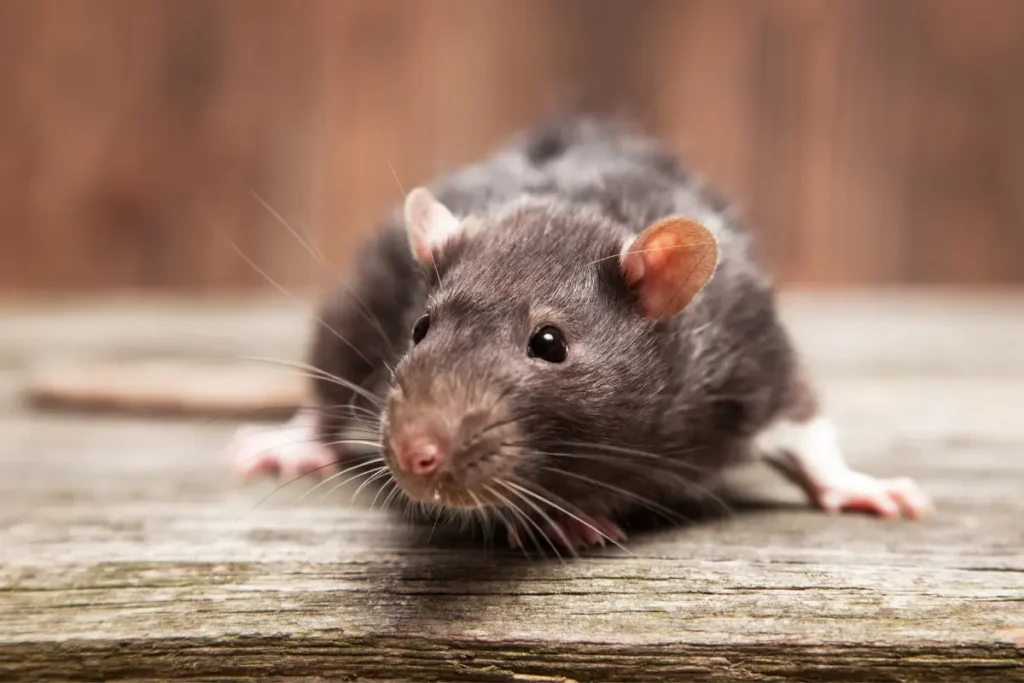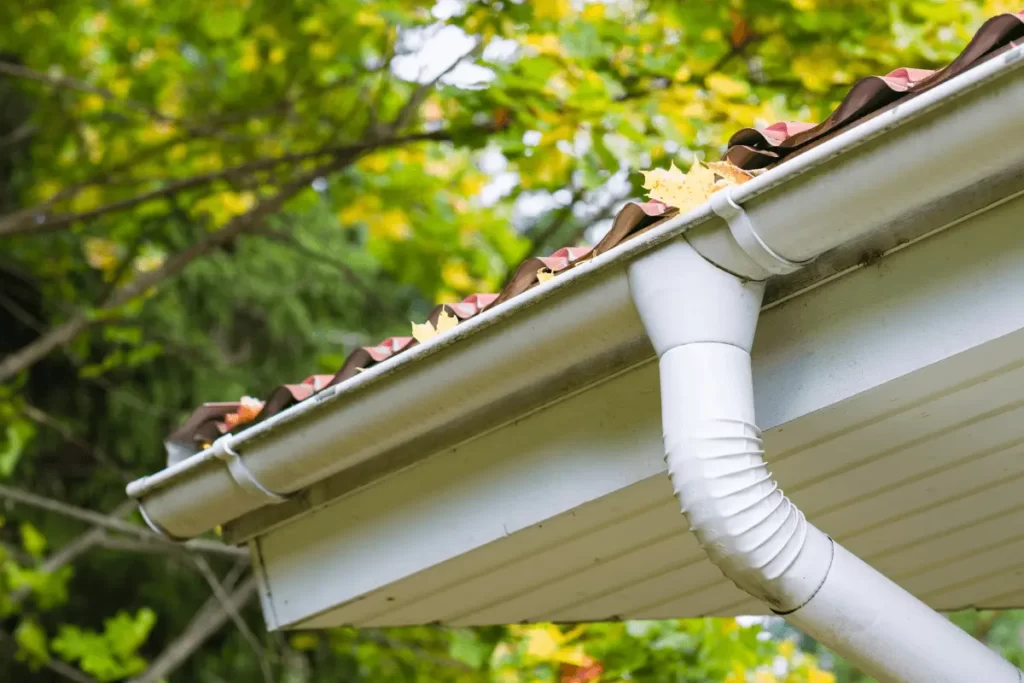Squirrels are active animals that can climb nearly any surface—trees, fences, and power wire. Vinyl siding is more difficult to climb than other fence types. You may be keen to find out, can squirrels climb vinyl siding.
Yes, Squirrels can climb on vinyl siding, and they seem to like it. They have distinctive claws that give them access to many places.
Vinyl has less traction for animal claws and feet than wood since it is smoother. Keep reading the article to find out why and what damage they can cause by climbing on vinyl siding.
How Do Squirrels Climb Vinyl Siding?

Yes, squirrels can climb vinyl siding and enjoy doing it. They are squirrels with unique claws and feet that allow them to access a variety of spaces. They chew the vinyl siding in addition to climbing.
Squirrels climb vinyl siding by grasping the surface with their razor-sharp claws. They can use the crevices and natural texture as toeholds. Thanks to their tiny grippers, they can scale vertical surfaces of wood, drywall, siding blocks, PVC pipes, concrete, downspouts, drywall, and even wallpaper.
Squirrels can climb trees, vines, and other types of vegetation. They can also climb up the corner cap of a vinyl siding top.
Concrete walls may appear smooth, but when they dry, tiny bubbles form, creating surfaces that squirrel claws can grab. They can access attic spaces thanks to their capacity to climb.
Do All Squirrels Climb Vinyl Siding?

No, all squirrels cannot climb on vinyl siding. Ground squirrels also have nails or claws. They mostly use them for digging and not for climbing, unlike some tree or arboreal squirrels that are exceptionally well-equipped to clamber up trees.
The middle digit of tree squirrels is very lengthy, which aids in their ability to ascend and descend trees.
Although ground squirrels may climb, they are rarely found extremely high in trees, and tree squirrels hardly ever retreat into ground burrows.
Flying squirrels, for instance, have been known to enlarge fractures and holes in siding, walls, and roofs in their quest to enter buildings.
Squirrels are skilled climbers. They have quick bodies and pointed claws. Their pointy nails may dig through your siding texture as they climb outside your wall.
Are Squirrels The Only Animals Who Climb On Vinyl Siding?

No, other creatures can climb vinyl siding, including chipmunks, mice, and rats. Rats and mice can climb on vinyl siding. Mice’s teeth are robust and resilient and can inflict much harm on homes. Even low-gauge aluminum and vinyl siding can be chewed through by a mouse.
Raccoons can run up to 24 km per hour and fall from 35 to 40 feet without getting hurt. Raccoons can climb very well. They will progress in nature. The majority of raccoons can scale brick walls.
Chipmunks are incredibly loud and create a variety of noises, especially when they’re active and moving around vinyl siding. The animal is trying to dig around in the wall, but you can hear it running and scratching even though you can’t see it.
They can harm anything on your property in this way, including components of the building’s exterior and inside.
How High Can Squirrels Can Climb On Vinyl Siding?
Squirrels can scale heights of up to 12 feet on vinyl siding. Squirrels can leap up to five feet off the ground and up to seven feet to reach your feeder from a tree or a house. Additionally, they will leap down from trees or roofs up to nine feet.
Squirrels have strong paws, razor-sharp claws, and a lot of willpower. They can hang upside down for long periods and climb various vertical surfaces thanks to their characteristics.
Most brick walls meet the criteria. However, a wall must have something to grasp through texture or feature to better grip the tree bark.
By rotating their ankles 180 degrees so that their hind paws are facing backward, tree squirrels can climb a tree top. It is quite amazing that the normal grey squirrel can jump over four feet high.
Can Squirrels Remain On Vinyl Siding For a Long Time?
Squirrels can spend as much time as necessary on vinyl siding. A squirrel can spend days, weeks, or even months living on vinyl siding. The squirrel won’t survive if it can’t locate food or water or if the siding’s temperature changes too much, from being too hot to cold.
They require a source of warmth, nesting materials, food, and water. One indication that squirrels might live on vinyl siding is the scratching you’ve heard in the walls. When you hear scratching, it’s time to look for further clues and see if they’ve left any other marks.
To construct their home, squirrels will nibble through any material. Sometimes squirrels make their way into your attic and then inside your walls. They can climb back up because they are intelligent and strong enough to do so, but occasionally they can’t.
Is It Harmful To Squirrels To Climb Vinyl Siding?
No, climbing vinyl siding does not kill or is harmful to squirrels. They have quick bodies and pointed claws. Their sharp nails may pierce your siding material as they climb the outside of your wall. Susceptible materials to this kind of harm include wood and adobe.
Squirrels can leap pretty far, both vertically and horizontally, so they can quickly access your roof and do damage. They are rodents with unique claws and feet that allow them to access a variety of spaces.
Squirrels also chew the vinyl siding in addition to climbing, which can be slightly harmful, but they do it because their teeth are continually developing; squirrels like chewing on your home’s vinyl siding.
Their teeth need to be filed down. The noise made when a squirrel chews can harm the house, cause leaks, and prevent you from falling asleep.
Do Squirrels Eat Vinyl Siding?
Yes, Squirrels do eat and chew vinyl siding. It’s possible to infer a squirrel made the hole when you see it crawling in and out of one in vinyl siding.
Though not always, this may be true in some circumstances. Squirrels expend a lot of energy searching for secure dens.
Although rats and mice may create more significant gaps in smaller places, squirrels are the best at gnawing. A determined squirrel is capable of doing extensive structural damage.
To get to a food source or a nesting location, to make nest material, or just because they like the process, squirrels will eat.
There is also evidence of aggressive chewing right through the siding and into the attic and wall spaces. A female squirrel (who subsequently gave birth to a litter) chewed an unusual amount of vinyl siding around an entry point.
Why Do They Eat Vinyl Siding?
To prevent their incisors from becoming too long, rodents (including mice, rats, and squirrels, to identify a few) must constantly eat something. That is the defense we occasionally employ when squirrels damage the vinyl siding and nearby residences.
They can keep their teeth filed down and sharpened by merely grinding their top and lower incisors against one other, even though both teeth grow continually.
Of course, chewing on things also helps. Squirrels and other rodents have strong jaws in addition to prominent incisors to aid in gnawing.
Almost anything softer than the hard enamel on their teeth will be chewed on by squirrels, including wood, aluminum, lead, copper, plastic, vinyl siding, sheetrock, asphalt, and mortar.
Squirrels will take advantage of existing holes in your house, gnawing through a plank of wood to access walls or the attic.
How To Stop Squirrels From Climbing Vinyl Siding?

We can apply the following ways to stop squirrels from climbing vinyl siding. Removing tree limbs that are eight to ten feet from your home’s roof and finding entrances. Wire mesh installation on your external vents.
- To prevent squirrels from climbing, apply polybutene to siding, railings, downspouts, and other places where chewing has been observed. The application of polybutene can be untidy and exceedingly sticky. Apply it again periodically to keep it tacky and sticky.
- If squirrels are nibbling on your siding, install thin films deposited long wire or cage traps with at least a 9-inch by 9-inch establishment around all of your property. To allow the squirrel to access the internet, use hooks with doors along both ends. Set the traps where munching is apparent.
- Installing gutter covers and guards prevents pests from climbing to potential access locations.
Conclusion
Squirrels are endearing, strange critters who may drive homeowners crazy by destroying gardens and other property. They can attempt to enter houses to make nests by scaling and siding them.
The most practical defense against infestation is to keep squirrels out of your home. Still, the best way to stop them from chewing your siding is to frequently combine exclusion with other measures like blocking entry sites and employing repellents.
If squirrels are scaling your vinyl siding, they’re likely doing so in search of food. As squirrels constantly grow their incisor teeth, they can harm your deck, siding, hammock, and fencing.
References
Bertrand, O.C., Püschel, H.P., Schwab, J.A. et al. The impact of locomotion on the brain evolution of squirrels and close relatives. Commun Biol 4, 460 (2021)


